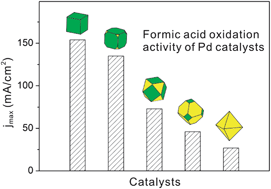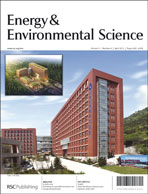This article reports a seed-mediated approach to polyhedral nanocrystals of Pd with controlled sizes, shapes, and different proportions of {100} to {111} facets on the surface. The success of this synthesis relies on the use of Pd nanocubes with different sizes as the seeds and the use of formaldehyde as a relatively mild reducing agent. By controlling the ratio of Pd precursor to the seed, we obtained uniform polyhedrons such as truncated cubes, cuboctahedrons, truncated octahedrons, and octahedrons in a purity approaching 100%. The sizes of these polyhedrons were determined by the edge length of the cubic seeds. Since these Pd polyhedrons were characterized by different proportions of {111} to {100} facets, they could serve as model catalysts to uncover the correlation between the surface structure and the catalytic performance for formic acid oxidation. Our measurements indicate that Pd nanocubes exhibited the highest maximum current density in the forward anodic scan, but the peak position was also located at a potential higher than those of the other polyhedrons. When both the current density and the operation potential are taken into consideration, Pd nanocubes with slight truncation at the corners become the best choice of catalyst for formic acid oxidation. Our study also revealed that the size of Pd polyhedrons had essentially no effect on the activity for formic acid oxidation.

You have access to this article
 Please wait while we load your content...
Something went wrong. Try again?
Please wait while we load your content...
Something went wrong. Try again?


 Please wait while we load your content...
Please wait while we load your content...